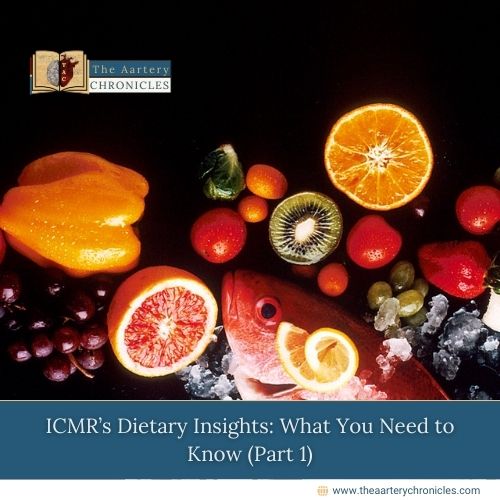

ICMR’s Dietary Insights: What You Need to Know (Part 1)
Introduction
In today’s world, where food adulteration is common and many people rely on packaged foods due to a lack of time for cooking, adopting healthy eating practices has become more important than ever. In light of this, the Indian Council of Medical Research (ICMR) and the National Institute of Nutrition (NIN) have jointly introduced 17 dietary guidelines tailored to meet the nutritional needs of the Indian population. These guidelines focus on the overall well-being of individuals and highlight that 56% of diseases in India are diet-related. The guidelines aim to address this by promoting healthy diets and lifestyles, helping to prevent nutrient deficiencies and non-communicable diseases.
Below is a detailed overview of the first eight guidelines and their importance in achieving optimal health and well-being.
1. Eat a variety of foods
A diverse diet is key to obtaining all essential nutrients. Incorporating cereals, pulses, vegetables, fruits, milk, and meat provides a well-rounded nutrient profile, including carbohydrates, proteins, fats, vitamins, and minerals. Consuming a balanced diet through a variety of food groups is crucial for growth, development, sustaining life, maintaining health, and ensuring optimal brain and immune function. Additionally, regular physical activity is essential to maximize the utilization of nutrients from a balanced diet.
2. Provide sufficient additional food and healthcare during pregnancy and lactation
Pregnancy is a critical period that places significant nutritional and physiological demands on a woman’s body. Extra nourishment is essential to support the mother’s nutritional needs, ensure the fetus’s proper development, and promote a healthy pregnancy outcome. The diet of a pregnant woman should include a variety of pulses, nuts, fish, eggs, and milk, while foods high in sugar, fat, and salt (HSHFHS) should be avoided.
3. Promote exclusive breastfeeding for the first six months and continue breastfeeding until at least two years or longer
Colostrum, the nutrient-rich and anti-infective first milk produced during the initial 3-4 days post-delivery, is highly beneficial for newborns. Breastfeeding lowers the risk of infections, supports cognitive development, and offers long-term health benefits, including reduced risks of obesity and diabetes. For the first six months, infants should be exclusively breastfed (EBF), with no need for water. Introducing water can decrease breast milk intake and increase the likelihood of diarrhea.
Additionally, breastfeeding also lowers the risk of breast and ovarian cancer in mothers while reducing the chances of developing obesity, type 2 diabetes, metabolic syndrome, and cardiovascular diseases such as heart attacks and strokes.
4. After six months of age, infants should begin receiving homemade, semi-solid complementary foods alongside breast milk
After six months of age, infants should begin receiving homemade, semi-solid complementary foods alongside breast milk. Exclusive breastfeeding alone is not enough to support the baby’s optimal growth beyond six months. Therefore, it is essential to introduce semi-solid foods to breastfed infants between the ages of 6 and 12 months. It is advised to minimize the use of salt in these complementary food preparations and to avoid offering foods and beverages with added sugar. It is recommended to continue breastfeeding alongside complementary foods for a minimum of two years.
5. Provide sufficient and suitable nutrition for children and adolescents, both in health and during illness
Proper nutrition during adolescence is essential due to the rapid growth occurring during this stage. A balanced diet for children over two years and adolescents support optimal growth and strengthens their immunity. It is advisable to incorporate pulses, nuts, oilseeds, vegetables, seasonal fruits, eggs, and meat into their regular diet. Ensure that growing children and adolescents receive enough milk, curd, or yogurt.
6. Eat plenty of vegetables and legumes
Fresh fruits and vegetables are rich in micronutrients, phytoproteins, fibers, and bioactive compounds, all of which play a crucial role in maintaining good health. They are also sources of prebiotics, which help improve intestinal flora and promote gut health. Leafy vegetables, in particular, provide essential nutrients like carotenoids, iron, folate, calcium, and others. In India, fruit and vegetable consumption is low, with an average intake of 100-200 grams per day, far below the recommended 500 grams. Consuming the recommended amounts of fruits and vegetables is essential for preventing micronutrient deficiencies and reducing the risk of chronic diseases such as hypertension, coronary heart disease, stroke, diabetes, and cancer.
7. Moderate the use of oils and fats, and include a variety of oilseeds, nuts, and other sources to meet daily fat and essential fatty acid needs
Fats, also referred to as lipids, play essential roles in various physiological and metabolic functions in the body. There are three types of fatty acids in our diet: saturated fatty acids (SFA), monounsaturated fatty acids (MUFA), and polyunsaturated fatty acids (PUFA). While SFAs and MUFAs can be produced by the body in addition to being obtained through diet, PUFAs, specifically omega-3 (n-3) and omega-6 (n-6) fatty acids, cannot be synthesized by the body. Thus, they are considered essential fatty acids. Since our body cannot produce n-3 and n-6 fatty acids, it relies on dietary sources to meet its needs. A high intake of saturated fats increases calorie consumption and raises the risk of heart disease and stroke.
Incorporating a variety of oilseeds, nuts, and whole grains helps provide a balanced intake of all fatty acids. The consumption of oils and fats should be moderate, and healthier cooking methods such as sautéing, boiling, grilling, steaming, and baking should be preferred over frying. Refined or extracted oils are processed products and should be consumed in moderation. Limit the use of oils and fats high in saturated fats, such as ghee and butter. Reduce the consumption of ready-to-eat fast foods, bakery items, and processed foods, as they may contain trans fats and saturated fats.
8. Consume high-quality proteins and essential amino acids from natural food sources, and avoid relying on protein supplements to increase muscle mass
Maintaining healthy muscle mass is vital for overall well-being. Consuming high-quality protein that supplies all essential amino acids and incorporating a resistance exercise routine are crucial for muscle growth and preservation. A vegetarian diet, when properly combining cereals and pulses along with the inclusion of nuts and seeds, can provide all essential amino acids. Adding milk to the diet can further improve protein quality. A non-vegetarian diet can offer quality protein through the right combination of cereals, pulses, nuts, and recommended portions of fish, poultry, meat, or eggs, all of which contain essential amino acids.
Conclusion
The ICMR dietary guidelines serve as a roadmap for adopting healthy eating habits, tailored to the cultural and nutritional needs of Indians. By following these guidelines, which emphasize balanced nutrition, mindful eating, and sustainable practices, individuals can make informed choices that support long-term well-being. The first eight guidelines serve as a strong foundation for achieving optimal nutrition and fostering healthier lifestyles across the nation.









